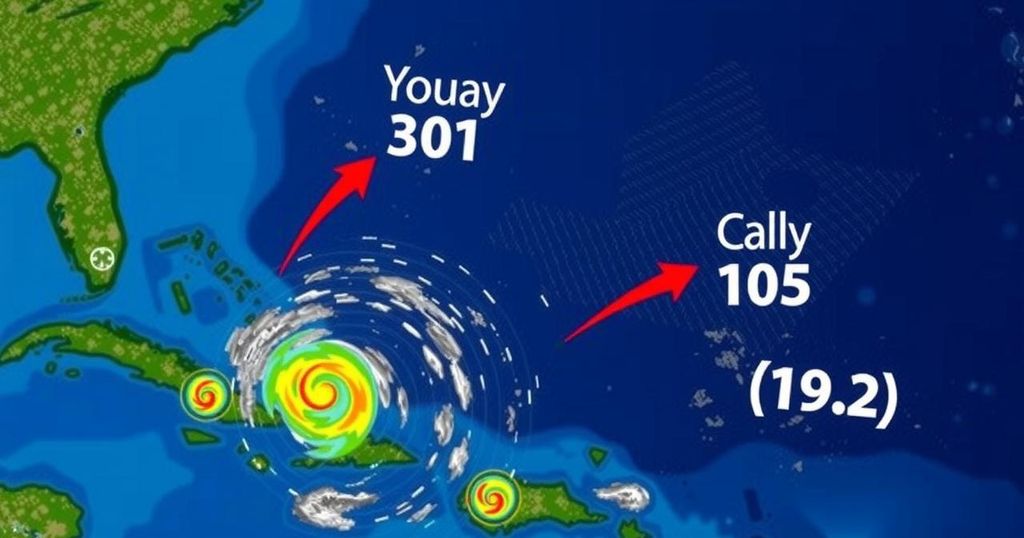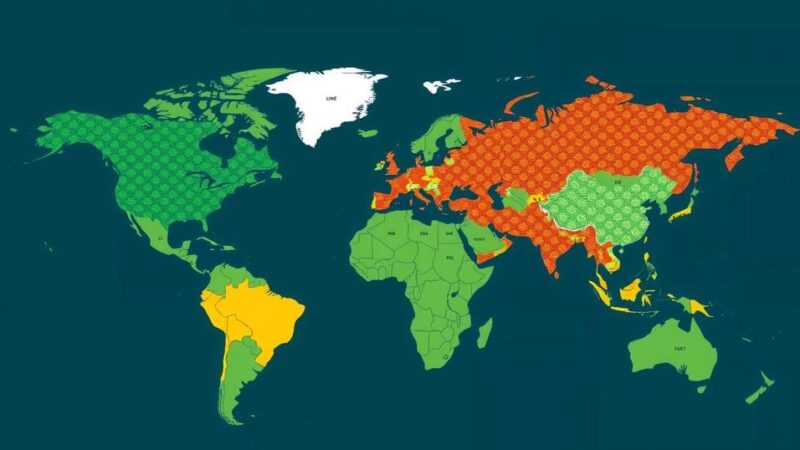The Atlantic hurricane season is still active as it enters November, with three areas of potential development, particularly in the western Caribbean. While one system may evolve into tropical storm Patty impacting Central America, the likelihood of significant storms affecting the Gulf Coast is mitigated by upper-level winds. This season has seen above-average storm activity, with predictions suggesting continued monitoring for further developments into late November and December.
As we approach the conclusion of the hurricane season, which typically winds down in November, the Atlantic basin continues to demonstrate unexpected activity. The National Hurricane Center has identified three tropical regions of interest, particularly a notable system in the western Caribbean that may develop into a tropical depression shortly. Should this system evolve, it holds potential to strengthen into tropical storm Patty, with the subsequent storms named Rafael and Sara. The trajectory of this potential storm remains uncertain, although there is a possibility that it may drift into the Gulf of Mexico. This region is likely to experience heavy rainfall and gusty winds, particularly affecting parts of Central America and Mexico’s Yucatán Peninsula next week. Fortunately, the US Gulf Coast may benefit from stabilizing winds in the upper atmosphere, which could serve to disrupt any storm that might approach this area. In addition to the Caribbean situation, two other tropical areas show limited potential for development within the week. Notably, one of these regions has already prompted stormy conditions leading to record rainfall in Puerto Rico, while additional flooding is anticipated for the Virgin Islands and Hispaniola. The other area, located further out in the open Atlantic, poses minimal threat to land regardless of development circumstances. This hurricane season has notably surpassed typical averages, with an increased number of named storms and hurricanes recorded, including five hurricanes affecting the US despite a temporary lull during the peak months. As such, the persistence of activity into November is not entirely surprising. Historical data indicates that while November is usually quiet, numerous storms have occurred in the month, particularly in warm waters of the Caribbean and central Atlantic, where disruptive winds are less vigorous. Consequently, although the Gulf of Mexico is not a typical source of tropical activity during November, the current warmth of its waters could offer a conducive environment for storm development if anomalies persist. The Climate Prediction Center suggests that the Caribbean may continue to be a hotspot for tropical systems through mid-November. While the official end of hurricane season is marked on November 30, tropical activity is not confined to this timeframe, as historical evidence reveals that numerous storms have indeed materialized in December since the late 1800s.
The Atlantic hurricane season, generally recognized as a period from June to November, has exhibited unusual patterns this year. Typically characterized by a lull in activity as the season approaches its end, 2023 has defied expectations with a continued presence of possible storm development as we enter November. Understanding the broader implications of this unusual season involves recognizing historical trends of storm activity during this month and the environmental factors that facilitate such occurrences. As the season nears its conclusion, meteorological assessments and predictions provide insight into the conditions that may influence the paths and intensities of any remaining tropical systems.
In summary, the Atlantic hurricane season remains active as we enter its final month, with several regions being monitored for potential storm development. The western Caribbean, in particular, poses a high likelihood of evolving into a tropical system, which could affect areas of Central America and the Gulf of Mexico. While two other regions show little promise for development, the current season has proven to be above average, raising anticipation for further tropical activity into November and possibly December. Meteorologists will continue to monitor these systems as their behaviors could significantly impact both local and downstream areas in the Atlantic basin.
Original Source: www.cnn.com






